We've gone Pink to help fight Breast Cancer.
Use code "BREAST" and we'll Donate $50 to National Breast Cancer Foundation
Main Menu
Petsy Breed Pages
The world’s most comprehensive information on the ...
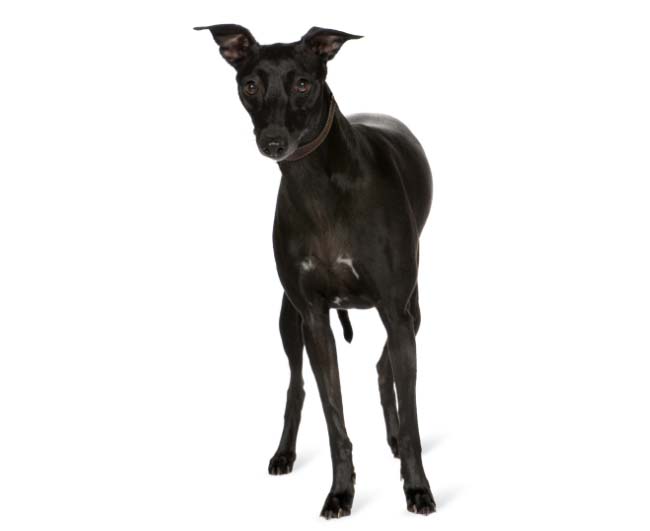
$1200.00 - $3500.00
English Whippet, Snapdog
Medium
Hound Group
Short
Medium
Medium
12 to 15 years

Would you like to know what it would cost to insure an Whippet? Find out by getting a free quote, with petsy pet insurance.





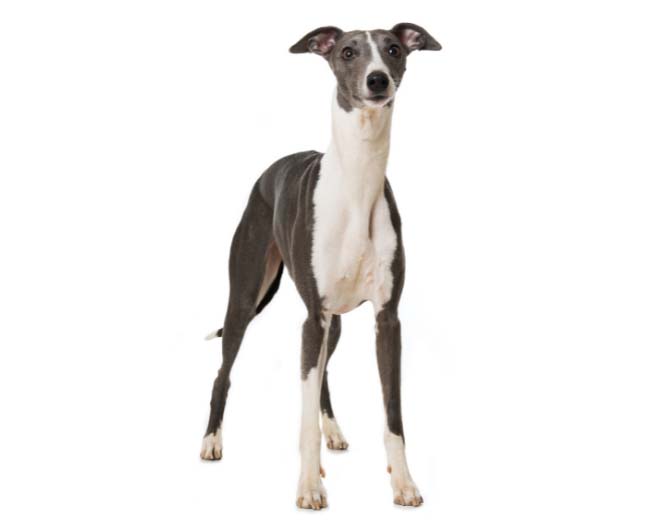


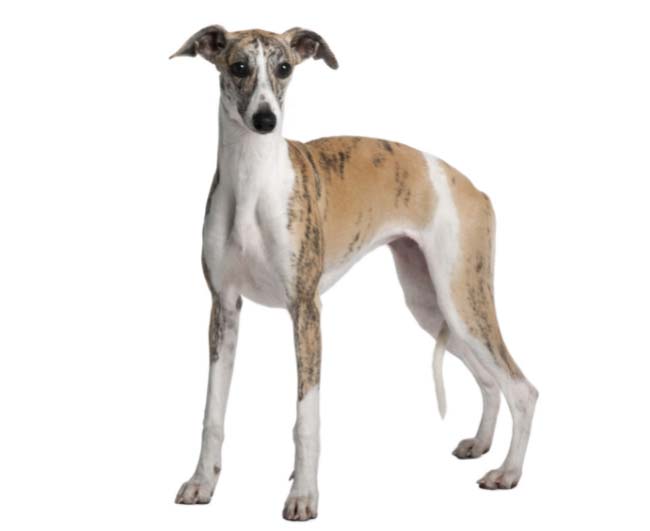

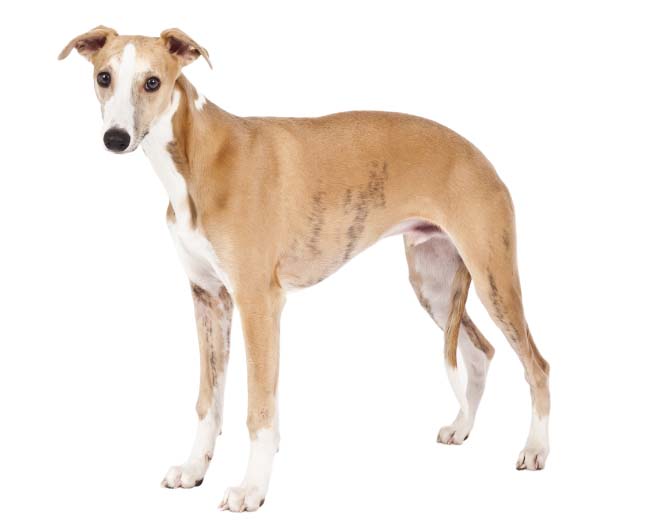
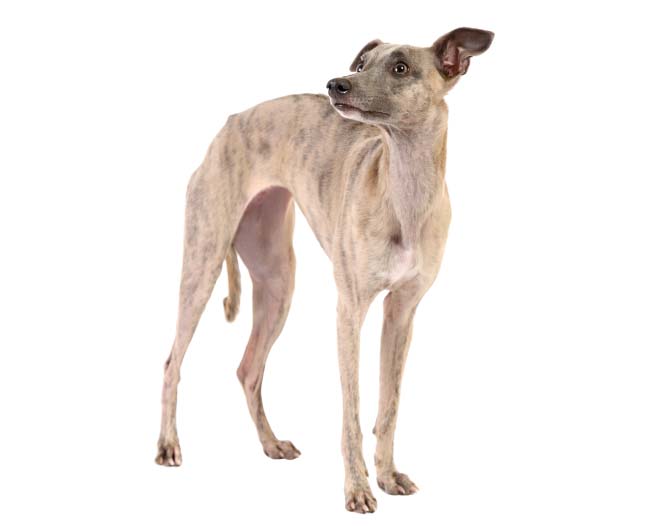
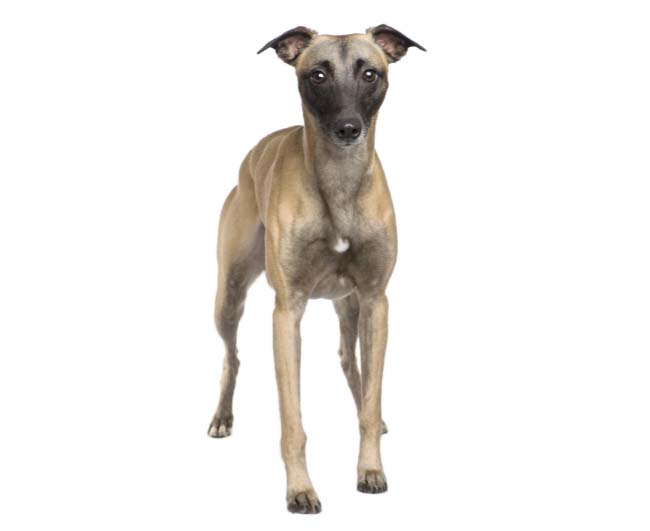
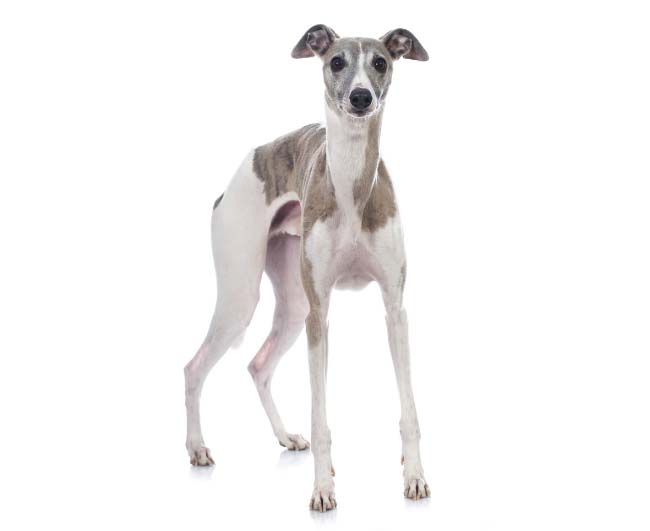
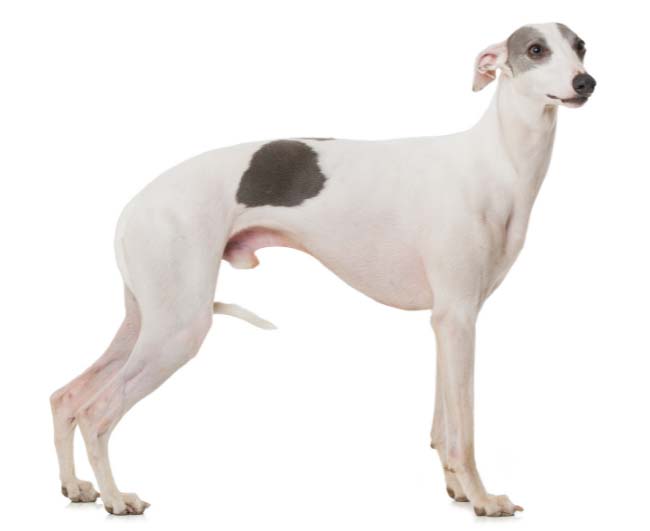

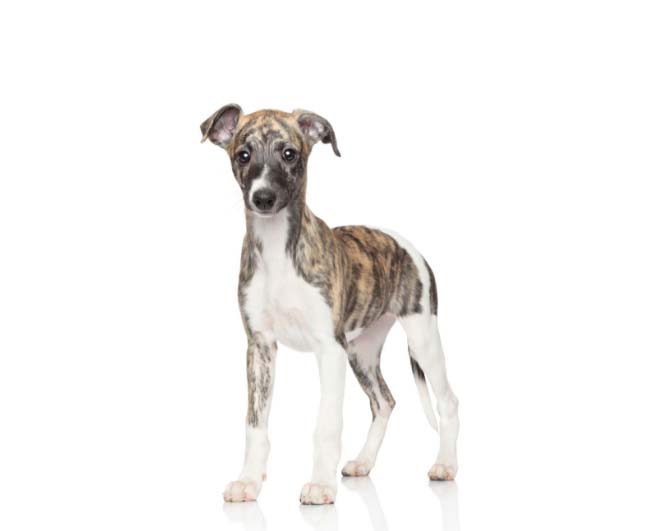
Whippet come in a variety of colours, including Black, Blue Particolour, Brindle, Brindle, Fawn and White, Light Fawn Brindle, Sabled Fawn with Black Mask, White and Brindle Particolour, White and Blue Markings, Brindle, Brindle.


How much do
Whippet eat?
1.00 to 1.50 cups of food a day

How much
exercise do they need?
20 to 30 Mins

Are they kid friendly? Have a good reputation for playing nice with kids

Do they need a lot of space?
Do very well in apartments or small dwellings
Patellar Luxation
Legg-Perthes Disease
Hip Dysplasia
Heart murmurs
The recommended amount of food to consume for the Whippet is 1 to 1.5 cups of dry food, separated into two daily meals. To establish their diet schedule, you can meet with your veterinarian. The amount you can give your dog varies considerably depending on his age and gender, so it is best to consult your vet or a nutritionist to ask for feeding advice. At all times, clean freshwater should be available.
Whippets do not shed excessively, and brushing them once a week will help keep loose hair off your clothes and furniture. The thin skin of a Whippet makes it susceptible to scrapes, tears, and nicks. Brushing them once a week with a rubber grooming mitt or tool or a de-shedding glove will help remove dead hair and maintain its appearance.
Grooming them only takes a few minutes each week. Brush them weekly with a rubber grooming mitt or a brush with short, natural bristles. A fine-toothed flea comb helps remove loose or dead hair. Their undercoat may come out in little thuds. Regular brushing will help keep shedding under control. With regular brushing, they shouldn?t need a bath more than every month or two.
Ears are an important area to check when you are grooming them, so if you smell an odor or see wax, clean the inner ear with a cotton ball, using a cleanser recommended by your veterinarian. Your careful weekly assessment will help you recognise potential health problems shortly.
Whippets require at least an hour of exercise per day. This should be divided into two walks, with a shorter one in the morning and a longer one with time to sniff and explore later on. Taking them on a brisk stroll two to three times a day should be enough. They make excellent jogging and hiking partners, but you must wait until the dog is two years old to avoid damaging the dog's developing joints.
Regular visits to their vet will ensure their health and well-being. Schedule at least twice a year veterinary care or as recommended depending on your dog's state. In these visits, your vet will complete a physical examination, take your dog's temperature and check his heartbeat, among other things. Discuss with your vet any concerns you think need immediate attention as it is a key part of preventative care.
Whippets make excellent family pets because they get along well with children. They are an excellent breed for children. They are also ideal for active families who enjoy outdoor activities and games. Teach children how to approach and play with dogs, just as you would with any other breed, and always keep a close eye on them when they are together. They are really adorable dogs who make a great addition to the family.
Whippets are usually an easy breed to train. They are naturally smart and quick to learn with food and or praise to motivate them. Because they come from a bloodline of intelligence and obedience, they are quick to learn and have a good memory! Use positive reinforcement to make them more motivated to train with you.
Whippets generally get along well with other dogs. And like other breeds, they will require early socialization training and exposure to various people, sights, sounds, and situations. But Whippets might have a hard time getting well with cats. But when properly introduced, they generally get along well with them and other animals too! It is important that they are carefully supervised when introduced to new friends.
Here are some of the breeders who we work with as part of our breeder awareness program.
They are invested in ensuring the longevity of the breed and that new owner become responsible Affenpinchers owners.
Affenpinchers who are friends of Petsy





Enter your email in the form below and we will send you the full report as a pdf directly to your inbox.
Don’t worry, we hate spam too – read our privacy policy
Find the right level of insurance for your needs our customised quote takes less than a few minutes to complete.
The recommended amount of food to consume for the Whippet is 1 to 1.5 cups of dry food, separated into two daily meals. To establish their diet schedule, you can meet with your veterinarian. The amount you can give your dog varies considerably depending on his age and gender, so it is best to consult your vet or a nutritionist to ask for feeding advice. At all times, clean freshwater should be available.
Whippets require at least an hour of exercise per day. This should be divided into two walks, with a shorter one in the morning and a longer one with time to sniff and explore later on. Taking them on a brisk stroll two to three times a day should be enough. They make excellent jogging and hiking partners, but you must wait until the dog is two years old to avoid damaging the dog's developing joints.
Whippets make excellent family pets because they get along well with children. They are an excellent breed for children. They are also ideal for active families who enjoy outdoor activities and games. Teach children how to approach and play with dogs, just as you would with any other breed, and always keep a close eye on them when they are together. They are really adorable dogs who make a great addition to the family.
Whippets generally get along well with other dogs. And like other breeds, they will require early socialization training and exposure to various people, sights, sounds, and situations. But Whippets might have a hard time getting well with cats. But when properly introduced, they generally get along well with them and other animals too! It is important that they are carefully supervised when introduced to new friends.
Suite 58, Mezzanine/388 George St, Sydney NSW 2000
Petsy Pty Ltd (ABN 54 633 343 058, AR 1277359) (‘Petsy’) distributes and promotes Petsy Pet Protection Plus (formally Petsy Pet Insurance), Petsy Puppy Protection Plus and Petsy Kitten Protection Plus as an authorised representative of Knose Financial Services Pty Ltd (ABN 38 620 795 735, AFSL 536651) trading as ThePetInsuranceCompany.com.au (‘ThePetInsuranceCompany.com.au’). ThePetInsuranceCompany.com.au is an underwriting agency acting under a binding authority as an agent for the insurer; Pacific International Insurance Pty Limited (ABN 83 169 311 193) (‘Pacific) in relation to Petsy Puppy Protection Plus and Petsy Kitten Protection Plus policies and Petsy Pet Protection Plus policies from 01 March 2023 or have an anniversary renewal date from 18 March 2023, and the Australia branch of Allied World Assurance Company, Ltd (ABN 54 163 304 907) (‘Allied World’) in relation to Petsy Pet Insurance policies purchased between 17 February 2022 and 28 February 2023 (inclusive) or renewed between 01 March 2023 and 17 March 2023 (inclusive). In all aspects of arranging this product, Petsy and ThePetInsuranceCompany.com.au act as an agent of Pacific/Allied World (as the case may be) and not as your agent. Any advice contained in this email is general advice only and has been prepared without taking into account individual objectives, financial situation or needs and you should consider the appropriateness of any such advice, the Product Disclosure Statement (‘PDS’) and the Target Market Determination (‘TMD’) available via http://www.petsy.com.au or by calling 1300 952 790 before making a decision to acquire, or to continue to hold, the product. Terms, conditions, limits and exclusions apply. Please refer to the PDS.
© Copyright 2024 Petsy Pet Insurance
During the application process You will be provided with the option to include Optional Extra Benefits that cover certain conditions and Treatments which are not otherwise covered under the Policy.
The Optional Extra Benefits are:
Alternative Therapies, Behavioural Problems, and Dental Illness.
Examples of Alternative Therapies: Acupuncture, physiotherapy, hydrotherapy
Examples of Behavioural Problems: Excessive licking, fur pulling, pacing and destructive
chewing.
Examples of Dental Illnesses: Dental diseases, gingivitis, periodontal disease.